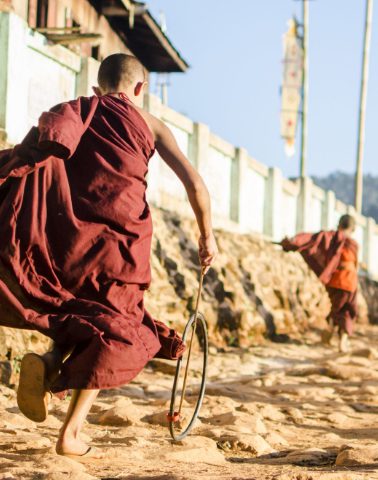
Subscribe to our mailing list
We are still here! Let us send you tips for travelling through Myanmar and stories from the road …
At Amarapura one can watch fishermen wading into the shallow waters of Taungthaman Lake with nothing but a stick and net to hand; and travellers can gaze in wonder at the Inthar of Inle Lake, steering their boats with just one leg. Even more remarkable are the Moken or ‘Salon’, known also as the Sea Gypsies, a nomadic people living in the Mergui Archipelago, fishing for sea urchins with spears and their own hands. Along the great Ayeyarwaddy River, an estimated 100 families still fish co-operatively with the Irrawaddy Dolphins.
Despite the Burmese penchant for fish, the Buddhist mantra of not taking life has led in the past to fishermen being regarded as the pariahs of society. In his book Golden Earth, Norman Lewis witnessed this hypocrisy, recounting how when sailing along the Altaran River in the south of the country, a freshly caught fish was ‘laid tenderly in the shade and eyes were averted while it leaped and quivered in mortal convulsion,’ before readily being consumed without a sniff of remorse or reproach.
Lewis goes on to note,
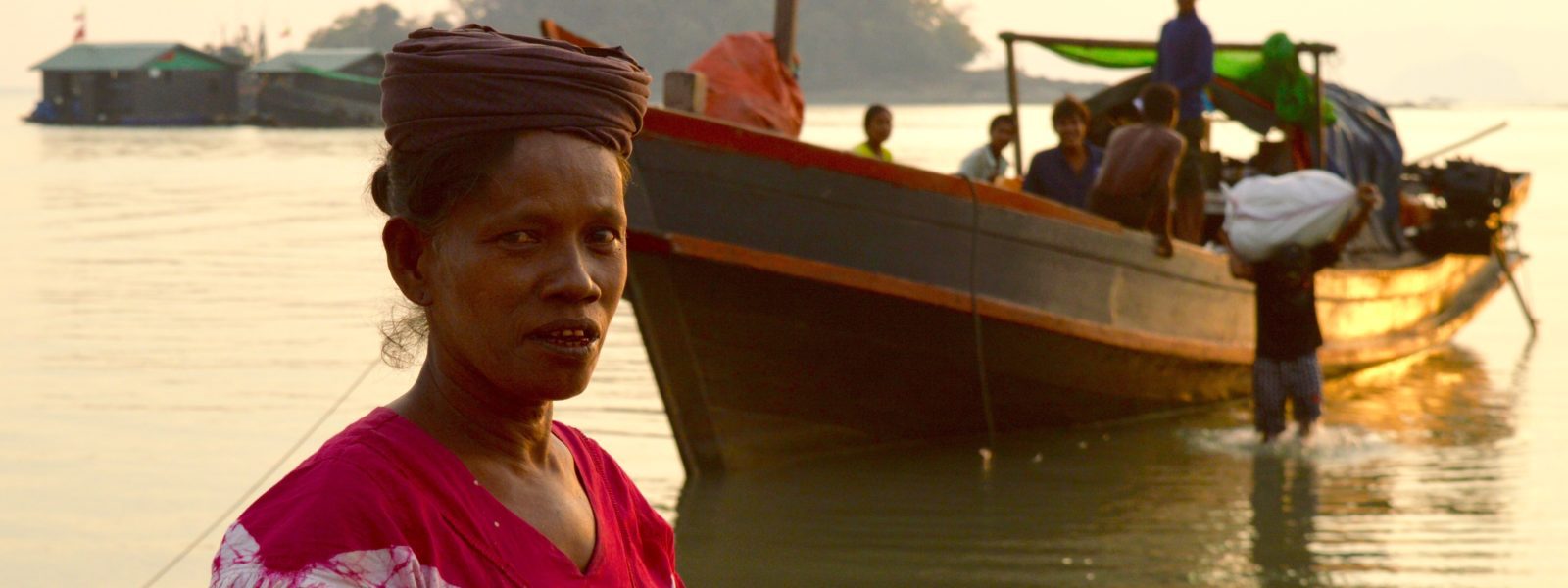
Fermented fish paste, ‘ngapi’ in Burmese, is the most popular condiment and is consumed with almost every meal. The smell of it, or the smell of the small fish laid out to dry in the afternoon sun before being pounded together, is incredibly pungent and there are few foreigners who have taken to ngapi with the gusto of the Burmese.
In Nyaungdun in 1880, riots broke out when the British Assistant Commissioner of the town – who one must assume had a particularly sensitive nose – attempted to pass a measure forbidding the fermentation of the fish in the open air. The violent protests on the streets which ensued led the proposal to be swiftly scrapped and the offending commissioner posted to another town.
Because of the ease of fishing in Myanmar and the continuously low price, aquaculture in the country is not as pronounced as one might expect and has received little interest from native fish farmers and consumers. The majority of the fish eaten is caught by locals on the coast and up and down the rivers by villages that have been catching and selling fish for generations.
One of the largest fishing hubs in the country is around the port of Dawei (formerly known as Tavoy) in the south of the country. The Dawei port, situated in an optimum location for trade, was tugged back and forth for centuries between Burma and the Kingdom of Siam, before the British decisively took the town as one of the first pieces of their Burma conquest in 1826.
In and around Dawei each day fish, prawns and lobster are caught in such large quantities that it is not only sufficient for the consumption of the Tanintharyi Division, but is shipped up and sent to Yangon, Thailand and other international markets.
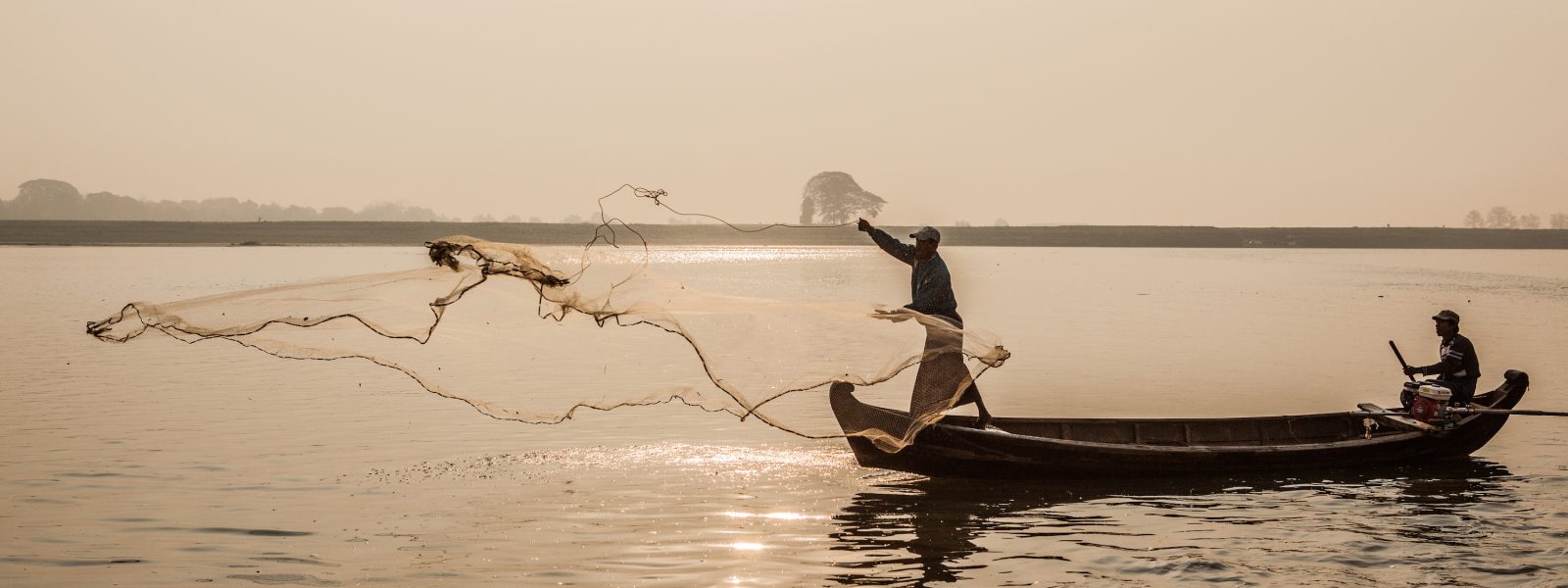
Dawei remains off the beaten track for visitors to Myanmar, however in increasing numbers tourists are making their way down to this southern stretch of the country to explore the unspoilt, rural environs of Dawei and the beaches where one is more likely to come across fishermen and their families than other travellers.
Maungmagan Beach, about a 45 minute tuk-tuk drive out of the city, is the most famous of the Dawei beaches. During the daytime stray dogs trot along the beach and you may well see the children of the local fishermen racing across the sand on oversized bicycles with a large fish held under their arm, a jubilant catch carried out with only their bare hands.
Further up from Maungmagan Beach is Phloe Hla Maw Beach, a 3 kilometre stretch of sand between two rocky hillocks, barred from the outside world by a dense grove of cashew nut trees. The only building on or viewable from the beach is a small hut where one old man from the nearby village of Yaun Pin lives, the spry figure of whom you may come across striding heartily over the bay.
… there is a small hut where one old man from the nearby village of Yaun Pin lives, the spry figure of whom you may come across striding heartily over the bay.
Save for commandeering a fishing boat, access to Phloe Hla Maw Beach can only be made via a footpath (still in mid-construction at the time of writing) from Yaun Pin. The walk up and over a heavily forested hill takes roughly an hour. Coming down the footpath on the other side one will pass over a sprawling brook before breaching the sand which stretches majestically out into the distance. What can appear a mirage at the heat of midday turns out to be a very real natural lagoon which has formed at the centre of the beach – roughly 150 metres across and deeper than a grown man in the middle.
The villagers who live nearby seldom come here themselves except to tend to the orchards or when using the beach simply as a throughway. There are fishing boats at work beyond the waves, but apart from them and the translucent crabs scuttling into their holes, you will likely have the beach to yourself.
It is not always possible, but in the past foreigners have stayed with their guide at the village of Yaun Pin after a sunset swim at Phloe Hla Maw. This village has its own bay and at dusk one can watch the fishing boats come in. At this point the bay fills up with villagers plunging into the crashing waves to help haul in the day’s catch. The fat, silver tuna are heaped in towering piles on the sand before being carted away in buckets a-top heads of stocky women clutching their bright tamain (a dress like the Indian sarong) with one hand.
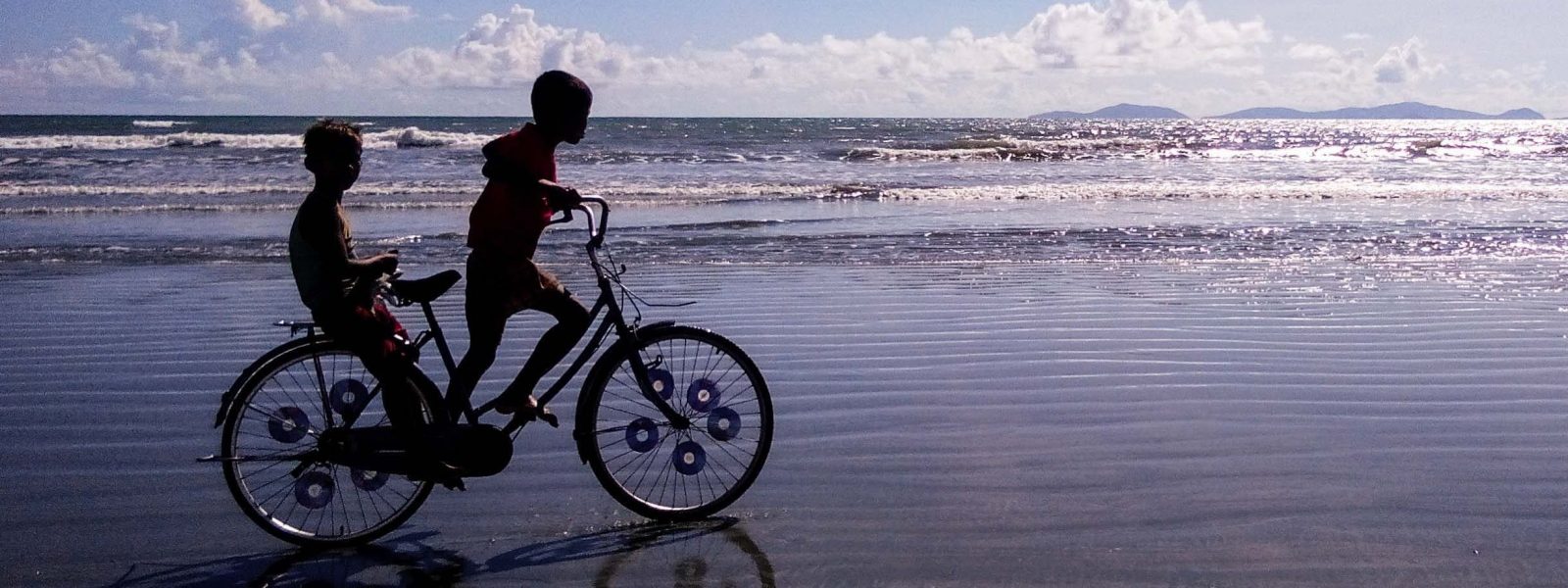
To observe an entire village going through a ritual they have had for generations, a ritual that to them is as natural and commonplace as a commute to work, and to observe them going through it with such vigour is utterly intoxicating. Watching the fishing boats come in at a village like Phloe Hla Maw, with the silhouettes of the limber and bare-chested fishermen backlit by the seafoam green boat lights and the charcoal smell of campfire smoke cutting through the stench of fish, is to see fishing in Myanmar at its most mesmerising.
Many villagers are used to seeing tourists striding through their village with backpack and phrase book during the day but after sunset a foreign face will receive a great deal of double-takes. The interest for the visitor – being granted admittance to witness the quiet intimacies of a village after lights out – is reciprocated by the villagers, in particular the children. A crowd of them will likely find an opportune vantage point from where to comfortably survey their guests. ‘Mingalabar’ (‘hello!’) will be received with smiles. Anything more, either due to poor pronunciation on your part or timidity on theirs, will likely only receive bashful giggles.
If staying in a Dawei fishing village, besides the fish staples of curry, ngapi, and bazun thoke (prawn salad), you may be able to sample the eclectic kat kyay kite, which literally translates as ‘cut with scissors’ and is made up of rice noodles with a variety of seafood, raw beans and sprouts. On such occasions you will be able to eat with your hands like the locals. It is likely you will be offered cutlery, but we say get stuck in! When in Rome and all that, or as they say in Burmese: san chi meh – ‘give it a go!’
North of Maungmagan Beach the works are in place for the Dawei Deep Sea Port, the so-called ‘Dawei Project’. Alongside the new Dawei port there are plans for the construction of an industrial estate, a residential estate for the workers and a road and rail network reaching all the way to Thailand. The Special Economic Zone will cover in total 50,531 acres. A broad array of smaller zones are incorporated within this one: high-tech industrial zones, export processing zones, port area zones, transportation zones, service business zones, and sub-trading zones.
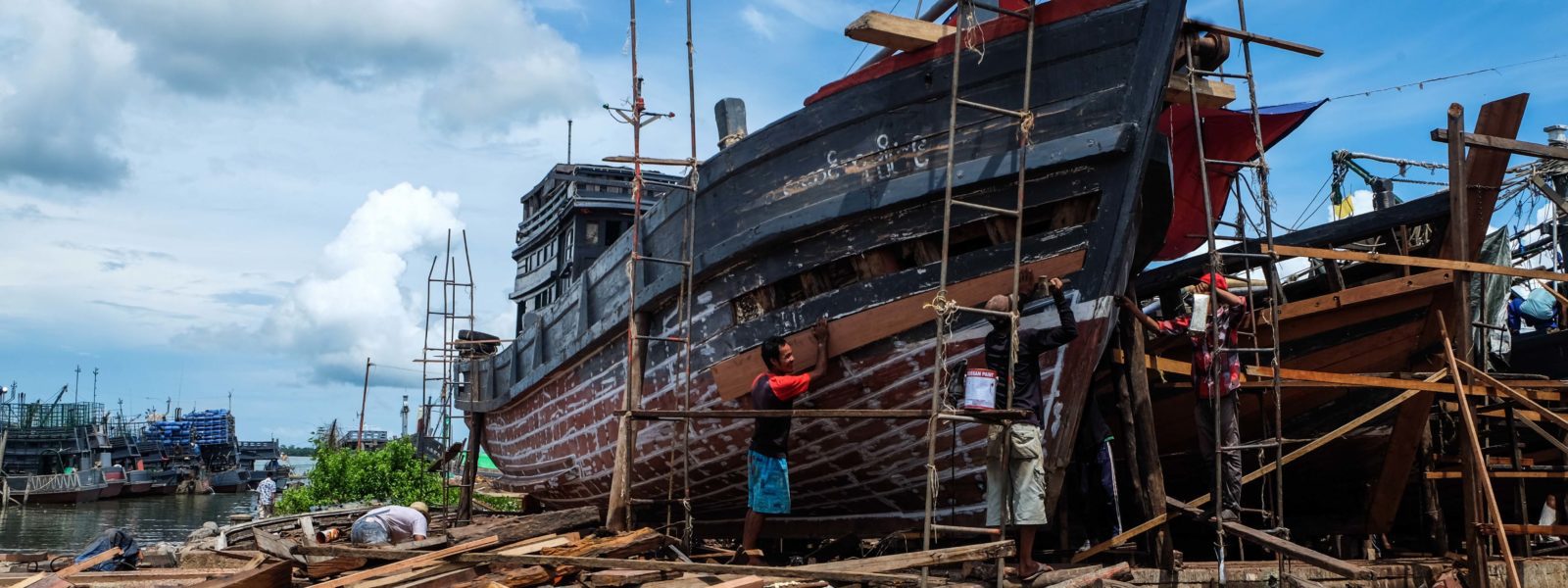
The Dawei port is destined to transform the region irreversibly as the town becomes the promised ‘new global gateway of Indo-China’ and once more takes up the role as the region’s central sea-trade hub. For better or for worse, all will change.
One may imagine how in a decade’s time the children of Yaun Pin will likely work as waiters and chambermaids in the hotels that sit where once the cashews grew and will tell the incredulous guests how this beach used to be empty save for themselves and the fishing boats.
To see the empty beaches and the local fishermen and their families at work, it is necessary to visit Dawei and its fish now.